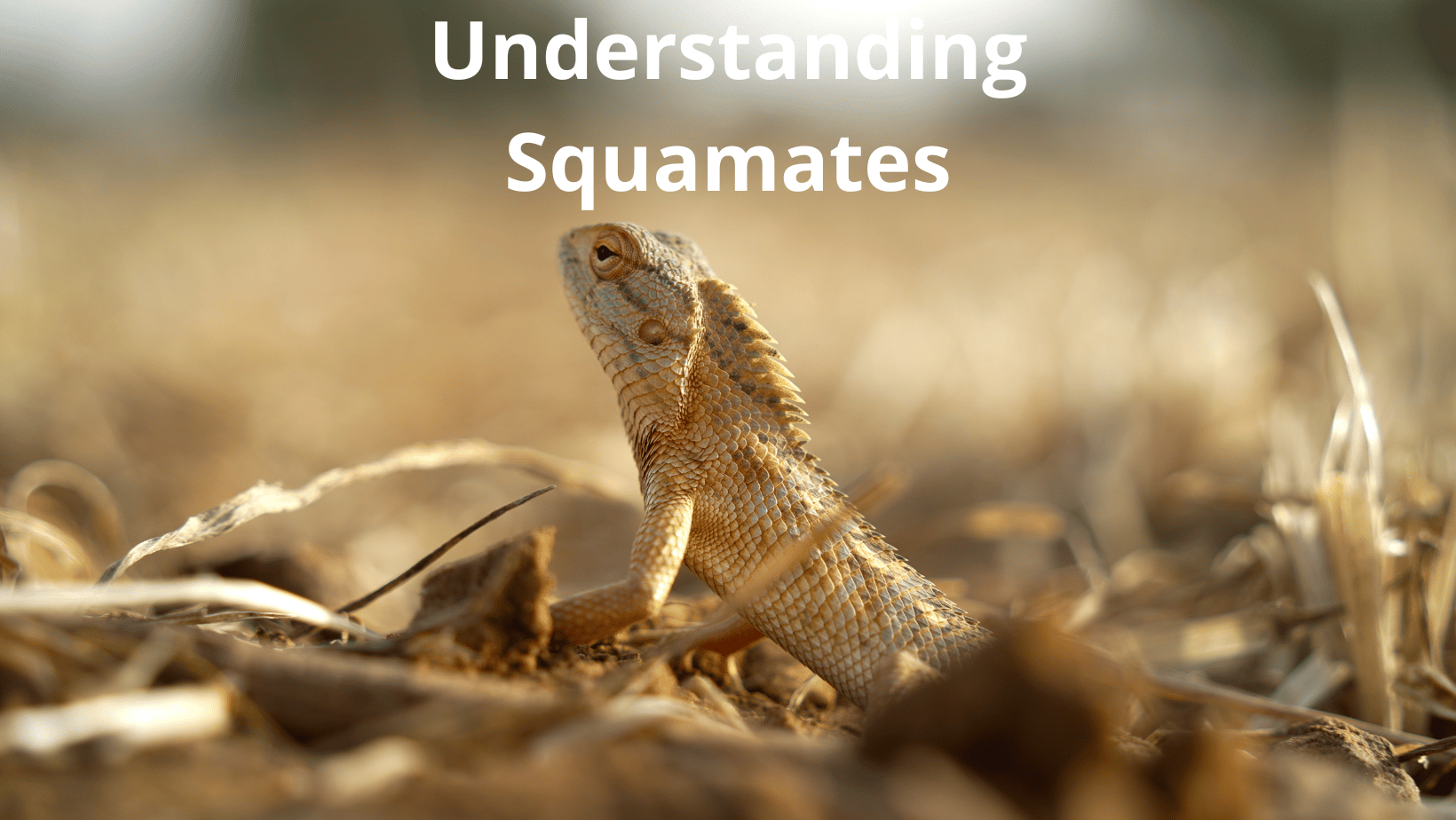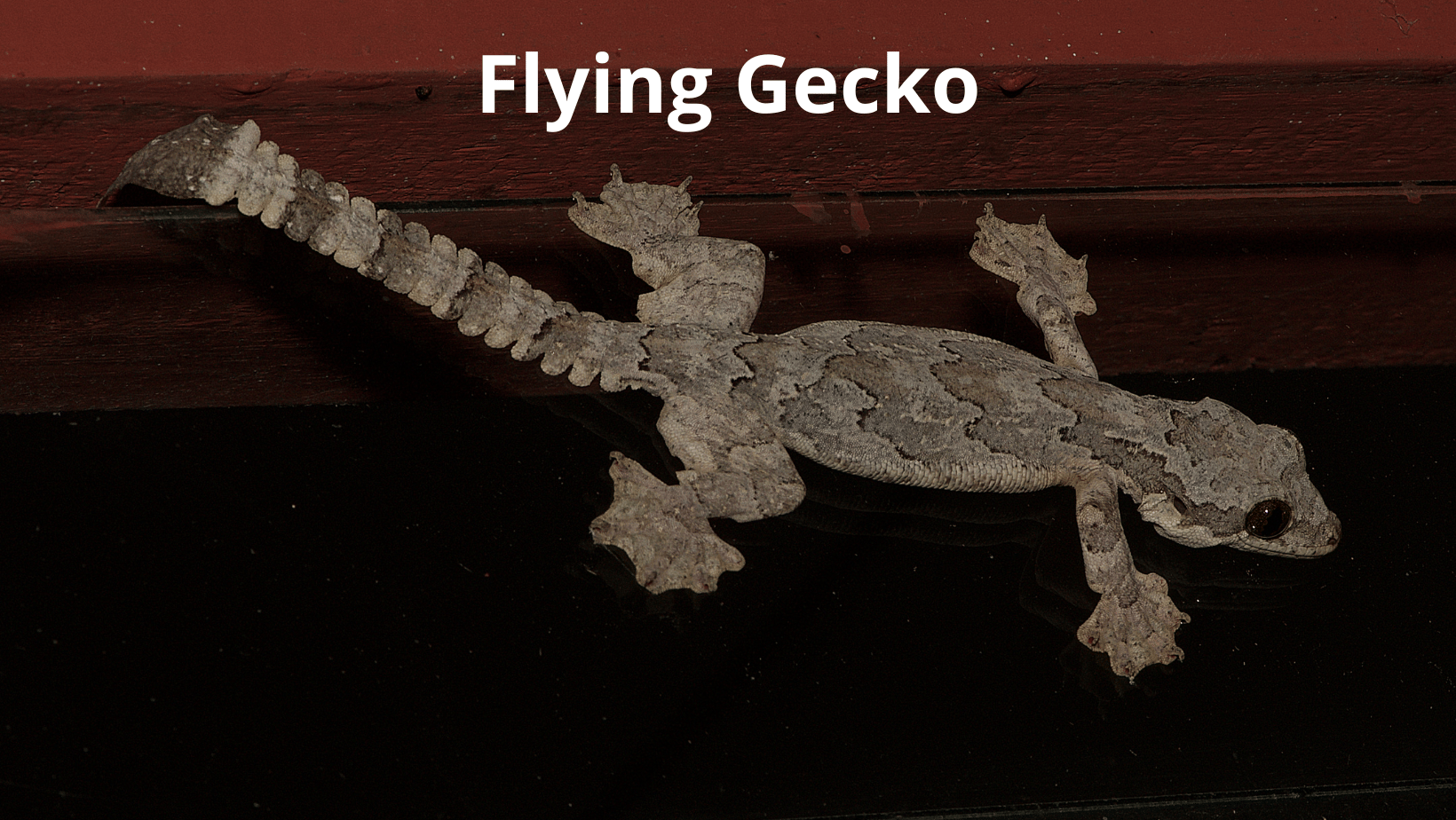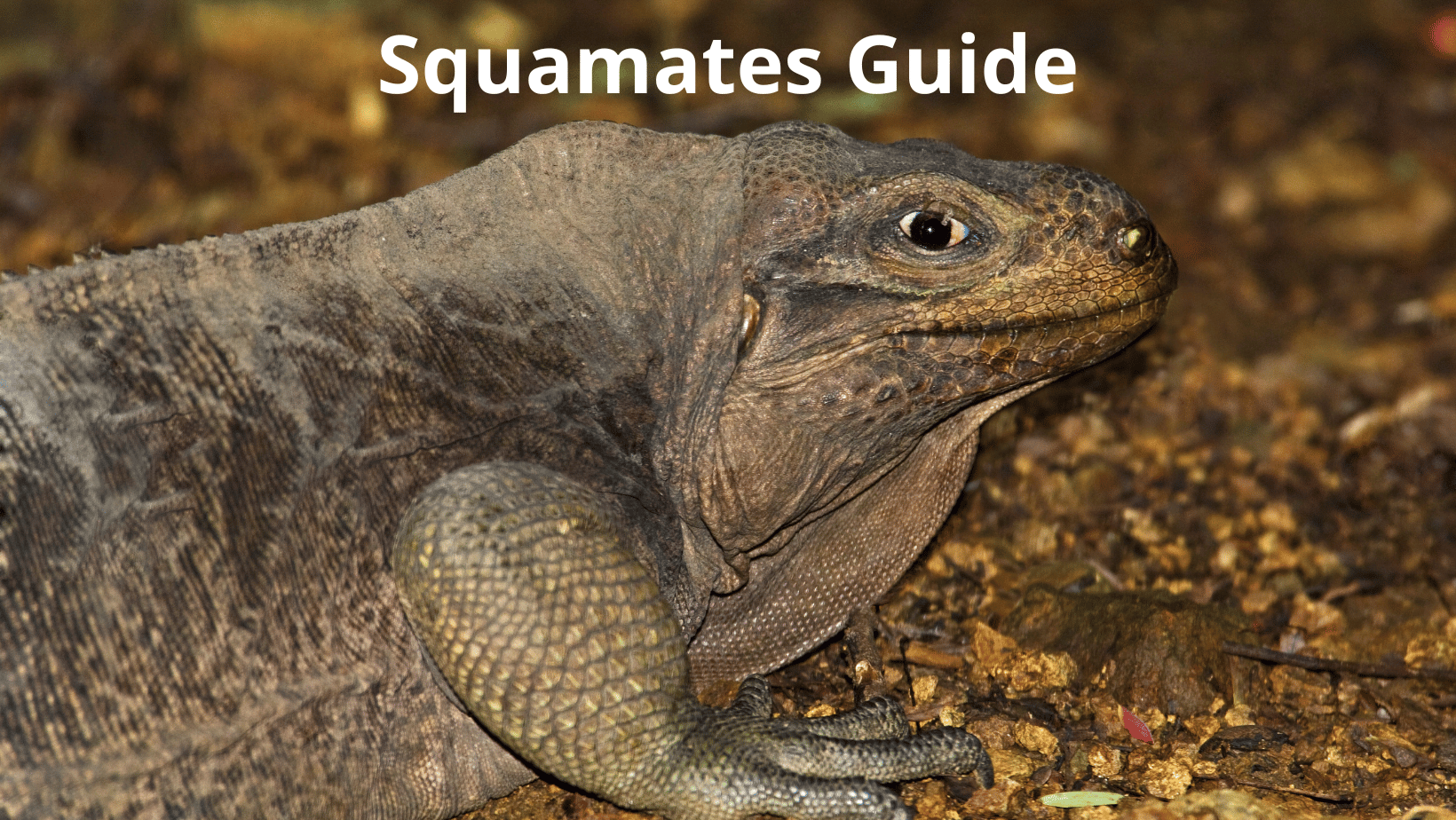Reptiles are a diverse and fascinating group of animals, and among them, the order Squamata stands out due to its size and variety.
With a name derived from the Latin word “squamatus,” meaning ‘scaly‘, the Squamata order comprises of species we commonly recognize as lizards, snakes, and amphisbaenians.
These creatures, collectively called squamates, have left a significant mark on our planet’s evolutionary history and continue to be a subject of intrigue for herpetologists and enthusiasts alike.
Understanding Squamata: Definition and Overview
The realm of reptiles is vast, but one order stands out due to its rich diversity and fascinating characteristics: Squamata.
Comprising lizards, snakes, and amphisbaenians, squamates have carved their niche in almost every habitat on Earth.
But what precisely distinguishes a reptile as a squamate? Let’s delve deeper into the world of these scaled wonders.
What Makes a Reptile a Squamate?
At its core, the definition of a squamate revolves around its distinctive skin. Deriving its name from the Latin term “squamatus,” meaning ‘scaly’, squamates are recognized by their scaly skins or shields. These reptiles belong to the largest order of reptiles and are collectively known as the scaled reptiles. It’s not just about having scales but the unique composition and structure of these scales that set squamates apart.
Distinguishing Features and Characteristics
Beyond their scales, squamates have other remarkable features. One such attribute is their movable quadrate bones.
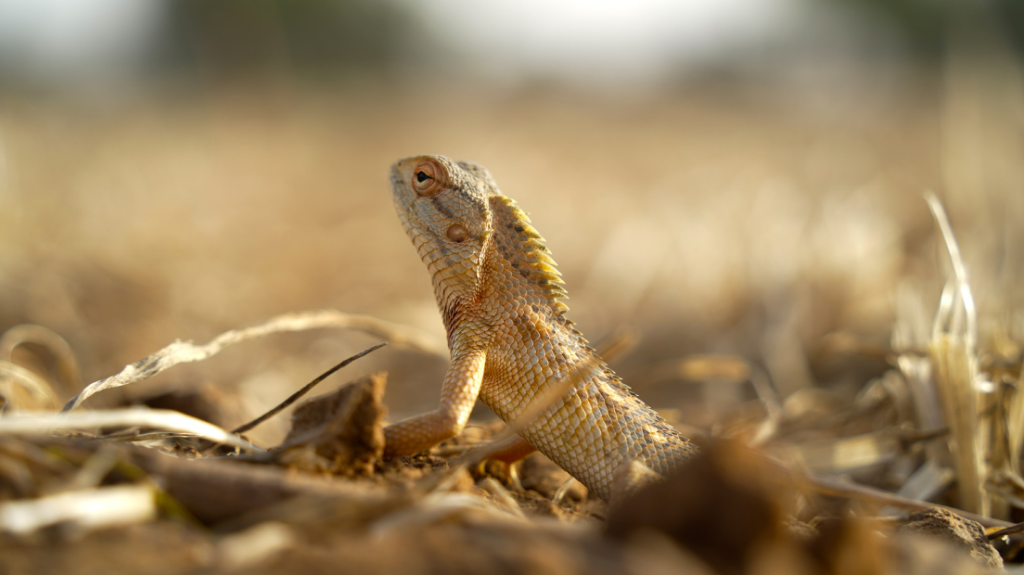
This adaptation allows for a wide range of motion of the upper jaw relative to the neurocranium, a trait particularly evident in snakes.
Snakes, for instance, can open their mouths exceptionally wide, aiding them in consuming large prey items. Another distinguishing characteristic is their periodic molting, a process by which they shed their old skin to make way for a new, fresh layer.
The Incredible Range in Size: From Dwarf Geckos to Reticulated Pythons
The world of squamates boasts a breathtaking range in size, demonstrating nature’s versatility.
On the smaller end of the spectrum, we have the dwarf gecko (Sphaerodactylus ariasae), measuring a mere 16 mm (0.63 in). This tiny reptile can comfortably rest on a human fingertip!
Contrast this with the majestic reticulated python (Malayopython reticulatus), which can stretch to lengths of up to 6.5 m (21 ft). The reticulated python is not only the longest snake but also one of the longest reptiles in the world.
Such diversity in size showcases the adaptability and evolutionary success of squamates across various ecosystems.
Evolutionary Background of Squamata
The story of squamates is a tale as old as time, offering a glimpse into the evolutionary dance of nature.
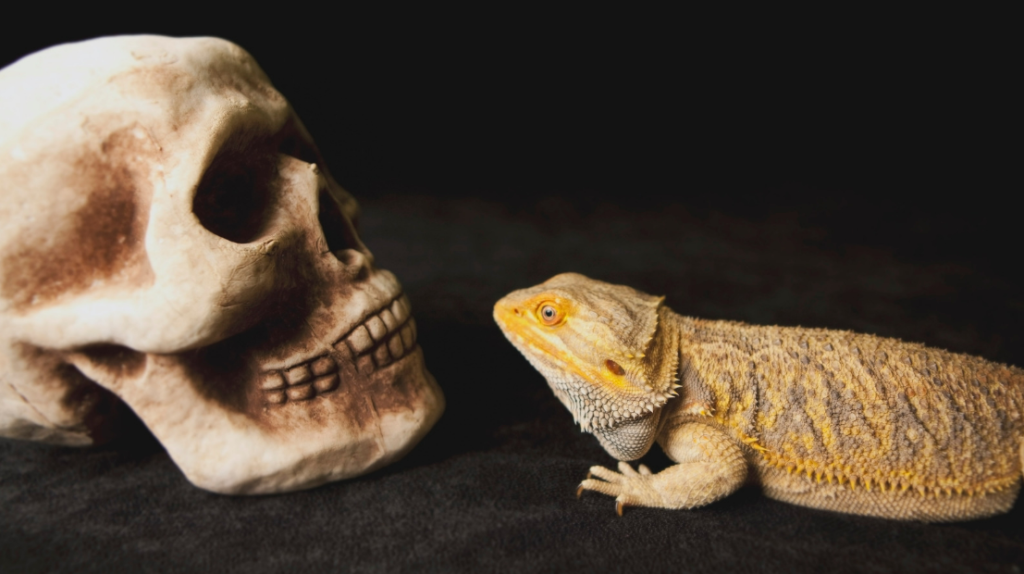
These reptiles, with their intricate scales and diverse forms, have a rich evolutionary background rooted deep in the annals of Earth’s history.
From their ties with ancient reptiles like the tuatara to surprising discoveries from the fossil record, let’s embark on a journey through time to understand the origins and evolutionary milestones of the squamates.
Their Close Relationship to the Tuatara and Rhynchocephalia
The tuatara, a unique reptile found only in New Zealand, is the last living member of the order Rhynchocephalia.
While it might look significantly different from your garden lizard or the snake in the woods, it shares an ancient kinship with squamates.
Both squamates and the tuatara belong to the clade Lepidosauria.
This connection serves as a crucial link to understanding the early divergence and shared evolutionary traits between the two groups.
A Dive into the Ancient World: Fossils and Their Significance in Understanding Squamate History
Fossils, nature’s time capsules, offer invaluable insights into the evolutionary journey of organisms.
For squamates, fossil records shed light on their early existence, diversification, and adaptation strategies.
Rhynchocephalian fossils first made their appearance in the Early Triassic, indicating that squamates must have existed during the same era.
Furthermore, the first fossils of geckos, skinks, and snakes emerge in the Middle Jurassic, giving us a window into the varied environments and challenges these creatures faced.
Megachirella: The Oldest Known Squamate
In a groundbreaking discovery, scientists unearthed Megachirella, a lepidosaur from about 240 million years ago during the Middle Triassic.
Detailed analysis, including high-resolution microfocus X-ray computed tomography (micro-CT) scans, revealed unique squamate features, confirming its title as the oldest known squamate.
This discovery not only pushes back the timeline for squamates but also provides crucial insights into their early characteristics and environments.
The Surprising Discovery of Cryptovaranoides and Its Implications
In 2022, the fossil world was abuzz with the introduction of Cryptovaranoides, an extinct genus from the Late Triassic of England.
This squamate, belonging to the Anguimorpha group, challenges our existing understanding of squamate diversification.
Its existence in the Triassic period suggests that squamates diversified much earlier than previously thought, possibly during the Carnian Pluvial Episode.
This discovery reshapes our comprehension of reptilian evolution, emphasizing the dynamic nature of science and our quest for knowledge.
Intricacies of Squamate Reproduction
Reproduction, the very essence of life’s continuity, is a diverse and fascinating aspect of the animal kingdom. Within the realm of squamates, the methods, anatomy, and strategies for reproduction display a tapestry of evolutionary marvels. From unique anatomical features to awe-inspiring adaptive techniques, squamates offer a deep dive into the multifaceted world of reptilian reproduction.
The Unique Reproductive Anatomy: Hemipenes
At the forefront of squamate reproductive peculiarities is the presence of hemipenes in males. Unlike most vertebrates, squamates possess not one but two reproductive organs, known as hemipenes, usually held inverted within their bodies. These structures evert during reproduction and can exhibit a range of shapes – from spines and hooks to even a forked appearance. Their function and design, intricately linked to their evolutionary history, serve as a testament to nature’s innovative solutions.
A Mix of Reproductive Strategies: Oviparous, Viviparous, and Ovoviviparous Species
Squamates, in their splendid diversity, encompass a broad range of reproductive strategies. While the majority lay eggs (oviparous), some bear live young, either by nourishing the embryo through a placenta (viviparous) or by hatching eggs internally (ovoviviparous). This spectrum of reproductive strategies showcases the adaptability and versatility of squamates, with each method finely tuned to the environmental and evolutionary pressures faced by individual species.
The Marvel of Asexual Reproduction in the Komodo Dragon
In an astounding display of reproductive versatility, the Komodo dragon – one of the most formidable reptiles on our planet – can reproduce asexually through a process called parthenogenesis.

In the absence of a male, females can produce viable offspring, essentially creating clones of themselves.
This mechanism, although rare in the reptilian world, highlights the astounding plasticity and resilience of the squamate reproductive system.
The Evolution and Significance of Venom
Venom, a potent blend of bioactive molecules, is one of nature’s most fascinating adaptations. Within the squamate lineage, the evolution of venom has been a game-changer, bestowing upon them both an effective tool for predation and a formidable means of defense. The intricate dance of evolution has crafted and honed this weapon, allowing squamates to thrive in diverse ecosystems across the world.
Origin and Development of Venom in Squamates
Long before snakes became the iconic representatives of venomous creatures, the roots of venom evolution in squamates were set in motion. Studies suggest that the evolutionary origin of venom may be deeply embedded within the squamate phylogeny. Through a process of gene duplication and subsequent modification, what began as normal body proteins underwent transformation into venomous compounds, giving rise to the venomous arsenal many squamates wield today.
The Predator-Prey Evolutionary Arms Race
At the heart of venom evolution lies an ongoing battle for survival: the predator-prey evolutionary arms race. As squamates developed potent venoms to subdue their prey, their targets in turn evolved mechanisms to counteract or resist these venoms. This back-and-forth dynamic has led to the rapid evolution and diversification of venom compounds, each tailored to target specific prey species or counteract their defenses.
Different Pathways of Venom Evolution
Venom, in its myriad forms, has not followed a singular evolutionary pathway. Initially thought to have modified from salivary or pancreatic proteins, newer research showcases that venoms have been derived from a plethora of protein bodies, each as diverse as their functions. From attacking the nervous system to breaking down cellular structures, the diverse toxins within squamate venoms underscore the multifaceted strategies these reptiles employ to capture and digest their prey.
The tale of venom in squamates is a testament to nature’s inventiveness. Through millions of years of evolutionary trials and tests, venom has emerged as a sophisticated tool, shaping the lives of its bearers and echoing the intricate dance of survival in the wild.
Squamates and Their Interaction with Humans
Across various cultures and ages, squamates, particularly snakes and lizards, have played diverse roles – from deities and demons to pets and pests. Their mysterious lifestyles and unique adaptations have both fascinated and frightened us. As we delve deeper into the human-squamate interactions, it is essential to understand the facts, which often lie veiled beneath myths and misunderstandings.
The Reality of Venomous Snake Bites: Statistics and Implications
Across the globe, venomous snake bites have etched a reputation of dread. But is this fear always warranted? On an annual scale, venomous snake bites account for a significant number of emergency medical consultations, especially in rural and tropical areas. However, with proper knowledge and precautions, many of these incidents can be prevented.
The statistics often present a chilling story. With thousands of snakebite fatalities reported every year, particularly in Asia and Africa, there’s no denying the real threat posed by certain snake species. However, context is crucial. Many incidents occur in areas where access to medical care is limited, and antivenom stocks might be scarce. Thus, the implications stretch beyond the mere numbers, highlighting the need for improved healthcare infrastructure, community education, and snakebite prevention measures.
Lizard Bites: Harmful or Harmless?
When it comes to lizards, the general perception is far more benign compared to snakes. And for the most part, this view holds true. The vast majority of lizards are harmless to humans, with their bites causing little more than a superficial wound. However, as with all generalizations, there are exceptions.
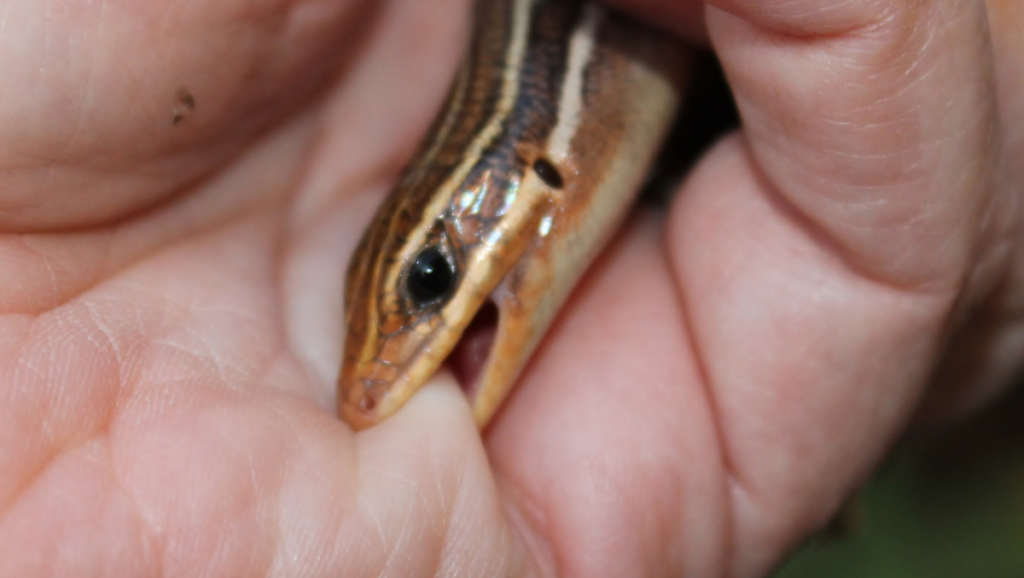
Some larger lizard species, like the monitor lizards, can deliver a painful bite owing to their sheer size and powerful jaws. Additionally, recent research suggests that some lizards might possess glands producing mild venom, though the effects on humans are usually negligible. Overall, while a lizard bite might not carry the same dangers as a venomous snake bite, caution is always recommended, especially when dealing with unfamiliar or wild species.
The Komodo Dragon and Monitor Lizards: Myth vs. Reality
The mighty Komodo dragon, residing in the islands of Indonesia, has always been shrouded in mystery and myth. From tales of their deadly saliva to stories of their unmatched hunting prowess, these giants of the lizard world have become legendary. But how much of this is fact?
In truth, while Komodo dragons are top predators in their ecosystem, the myths of their saliva being deadly toxic have been debunked. Instead, it is their potent bite force and serrated teeth that make them formidable. Monitor lizards, on the other hand, are widespread, with varying sizes and behaviors. While they share many traits with the Komodo dragon, each species has its unique quirks. It’s vital to separate fact from fiction, appreciating these creatures for their ecological roles and incredible adaptations.
As we explore the rich tapestry of human-squamate interactions, it becomes evident that knowledge, respect, and understanding form the crux of our shared existence. With the right perspective, we can coexist, appreciate, and protect these remarkable reptiles.
Classification and Modern Understanding
The world of squamates is vast and diverse, encompassing a multitude of species that exhibit an incredible range of behaviors, adaptations, and morphologies.
Historically, our understanding of squamate classification was based on observable physical traits, leading to broad categorizations.
However, with advances in molecular biology and genetics, this understanding has been refined, reshaped, and redefined. Let’s delve into the evolution of squamate classification from traditional divisions to our current, more nuanced understanding.
Tip: Also read a guide to all squamate groups and families.
Traditional Divisions: Lizards, Snakes, and Worm Lizards
The most straightforward and historically prevalent classification of squamates was primarily based on their external morphologies. Lizards, with their four limbs and elongated bodies, formed one group. Snakes, limbless and often more elongated, were categorized distinctly. Lastly, worm lizards (or amphisbaenians), which are limbless like snakes but differ in their biology and morphology, were the third pillar of this tripartite division.
While these divisions provided a foundation for understanding, they also came with limitations. Such a classification sometimes overlooked the intricate evolutionary relationships between these groups, leading to oversimplifications. For example, did you know some lizards are also limbless, making them look incredibly snake-like? This raises the question of whether the traditional methods were holistic enough to capture the complexity of squamate relationships.
Modern Classifications Based on Molecular Biology
With the advent of molecular biology, particularly the analysis of genetic materials, our perception of squamate relationships underwent significant changes. Instead of merely relying on visible traits, scientists could now probe deeper into the genetic blueprints of these animals, unearthing connections previously unimagined.
Such studies have occasionally shaken up the traditional tree of squamate evolution. For instance, molecular evidence suggests that snakes might have evolved from a lineage of burrowing lizards. This revelation paints a more intricate picture, where some traditional categories become paraphyletic, meaning they don’t contain all the descendants of a common ancestor. As a result, our modern classifications are now more reflective of the true evolutionary relationships, allowing for a more comprehensive understanding of squamate biology and history.
The Continuous Journey to Understand Squamate Relationships
While modern tools and techniques have provided unprecedented insights, the journey to decipher squamate relationships is far from over. As with any scientific endeavor, new findings can lead to further questions, refining or even reshaping our current understanding.
For instance, while molecular studies have clarified many relationships, there’s still debate over certain aspects of squamate evolution and classification. This ongoing quest for knowledge exemplifies the dynamism of science. As more data gets accumulated, whether from fossil discoveries or genetic analyses, the squamate classification tree might undergo further revisions. The objective remains consistent: to arrive at a comprehensive and accurate understanding of these fascinating creatures’ evolutionary history.
The classification and understanding of squamates is an evolving tapestry, interwoven with threads of observation, analysis, and discovery. As we continue to unveil the mysteries of these reptiles, each revelation brings us closer to a holistic understanding of their place in the grand scheme of life.
